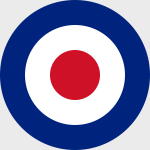Corgi AA37702 Royal Flying Corps Royal Aircraft Factory S.E.5a Fighter - Captain W. A. "Billy" Bishop, No.61 Squadron, 1917 (1:48 Scale)
"The most important thing in fighting was shooting, next the various tactics in coming into a fight and last of all flying ability itself."
- Lt. Colonel W. A. 'Billy' Bishop, RAF
 The Royal Aircraft Factory S.E.5 was a British biplane fighter aircraft of the First World War. Like the Hurricane compared to the Spitfire in the Second World War, the S.E.5 was not as glamorous as the Sopwith Camel, nor did it achieve the same iconic status, but it was one of the most important and influential aircraft of the war. The S.E.5 was instrumental in ensuring that the period of German dominance known as Bloody April 1917 was not repeated.
The Royal Aircraft Factory S.E.5 was a British biplane fighter aircraft of the First World War. Like the Hurricane compared to the Spitfire in the Second World War, the S.E.5 was not as glamorous as the Sopwith Camel, nor did it achieve the same iconic status, but it was one of the most important and influential aircraft of the war. The S.E.5 was instrumental in ensuring that the period of German dominance known as Bloody April 1917 was not repeated.
The S.E.5 (Scout Experimental 5) was designed by Henry P. Folland and J. Kenworthy of the Royal Aircraft Factory in Farnborough. It was built around the new 150-hp (112 kW) Hispano-Suiza 8a V8 engine which, while it provided excellent performance, was under-developed and unreliable. The first of three prototypes flew on 22 November 1916. The first two prototypes were lost in crashes and the third underwent modification before production commenced.
Only 77 original S.E.5s were built before the improved S.E.5a model took over. In total 5,205 S.E.5s were built by six manufacturers including Austin Motors and Vickers. A few were converted as two-seat trainers and there were plans for Curtiss to build 1000 S.E.5s in the United States but only one was completed before the end of the war.
Pictured here is a 1:48 scale replica of a S.E.5a night fighter piloted by Lt. C. A. Lewis of No.61 Squadron, attached to the Home Defense during 1918.
Sold Out!
Dimensions:
Length: 5-1/4-inches
Wingspan: 6-3/4-inches
Release Date: February 2008
Historical Account: "Flyboys" - The Royal Flying Corps' top-scoring WWI ace was Billy Bishop, a Canadian who scored 72 victories. Awarded the Victoria Cross, he was the first pilot to surpass the record of British ace Albert Ball. McCuden, Ball, Bishop, Mannock and many other British aces found the S.E.5a was, at last, the aircraft they could fight fight on equal terms with the German Albatros. Soon after they were delivered, Lieutenant A. P. F. Rhhs Davids, flying with No.5 Squadron, brought down Werner Voss, von Richtofen's famous number two.
Although just a single victory, it was an enormous boost to Allied morale and an early scalp for the S.E.5a, which, despite its rugged almost over-simple appearance, was destined to become one of the most successful British aircraft of WWI.






![Israeli Defense Force Boeing F-15A Baz Multi-Role Fighter - 133 Squadron "Knights of the Twin Tail", Tel Nof, Israel, May 1978 [Low-Vis Scheme] (1:72 Scale)](http://cdn4.volusion.store/qh9e9-jdqv9/v/vspfiles/photos/HA4505-1.jpg?v-cache=1740197136)


